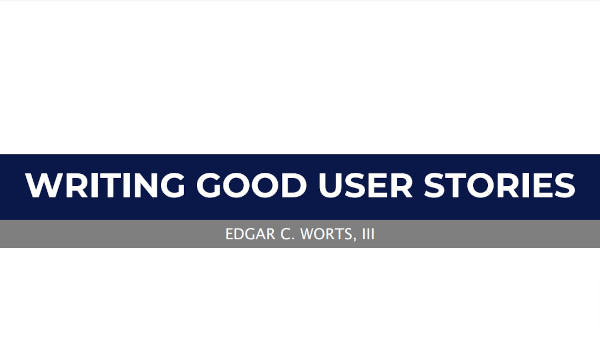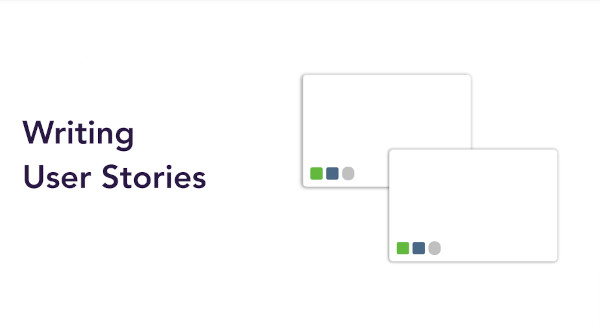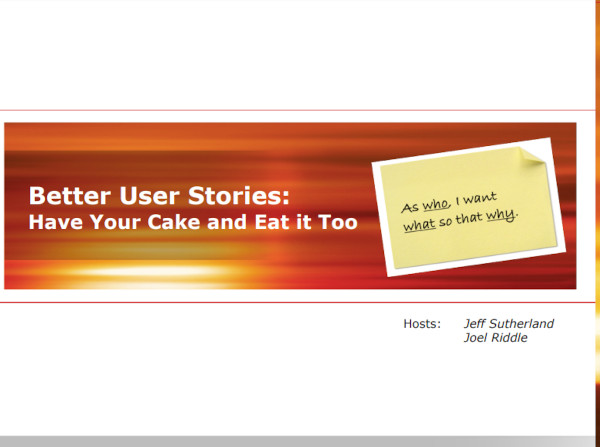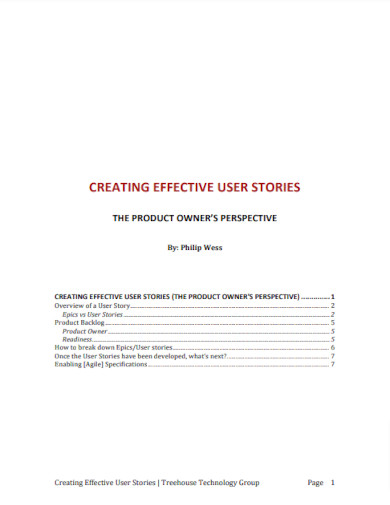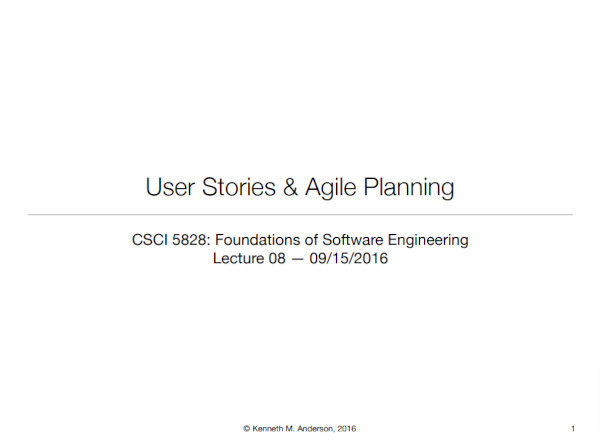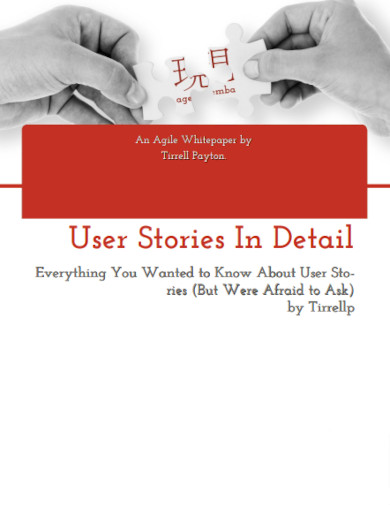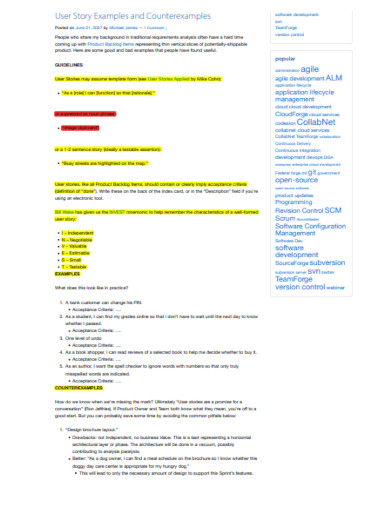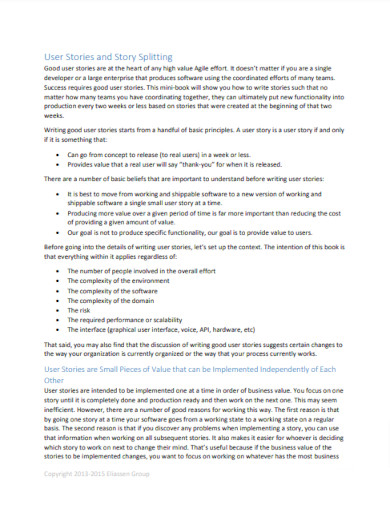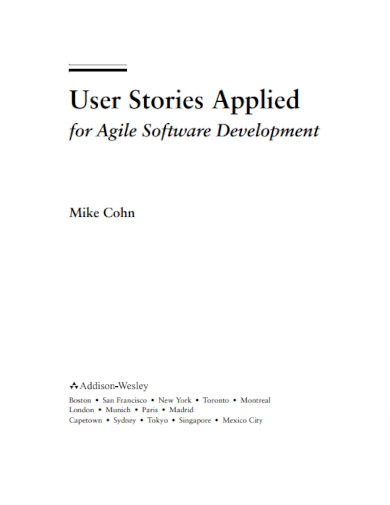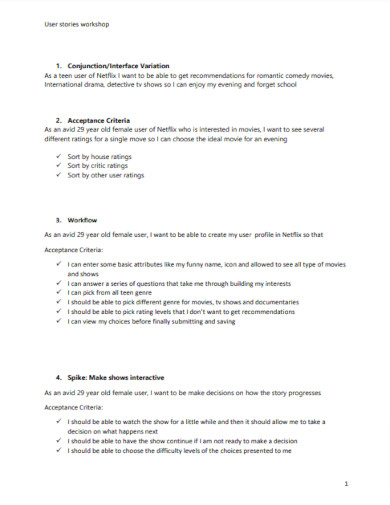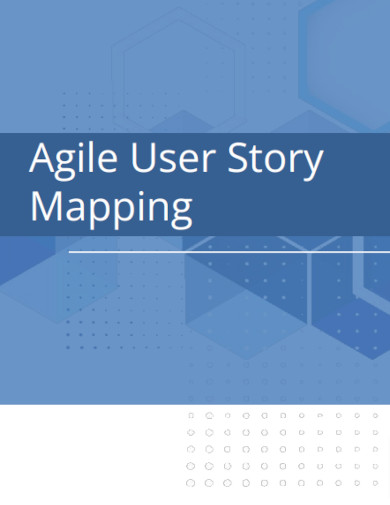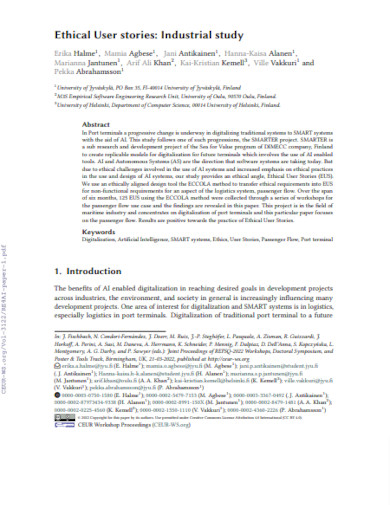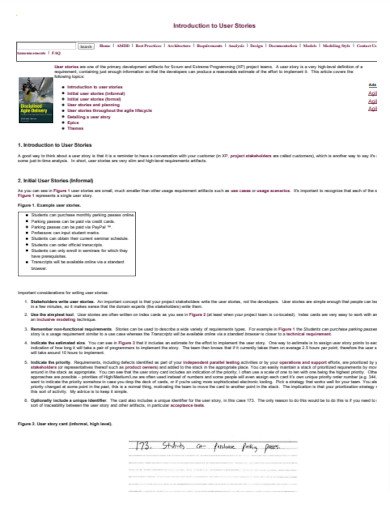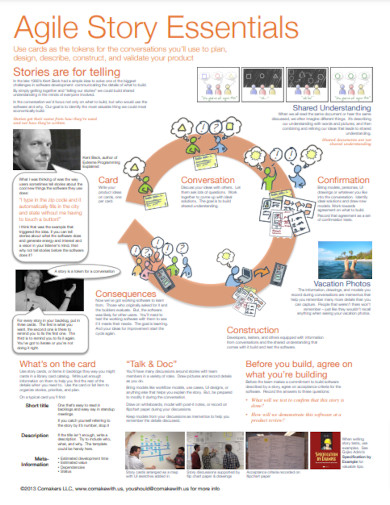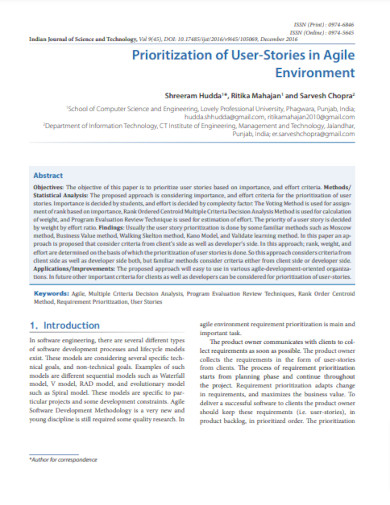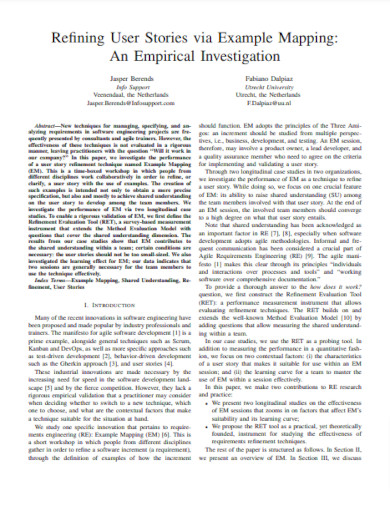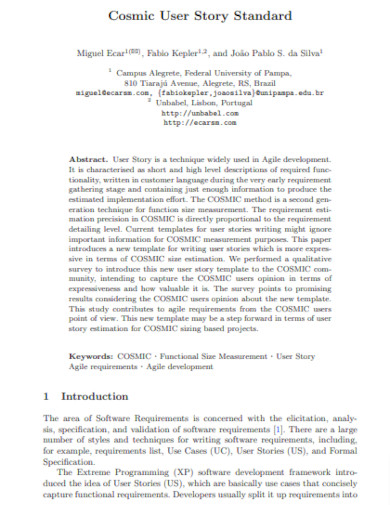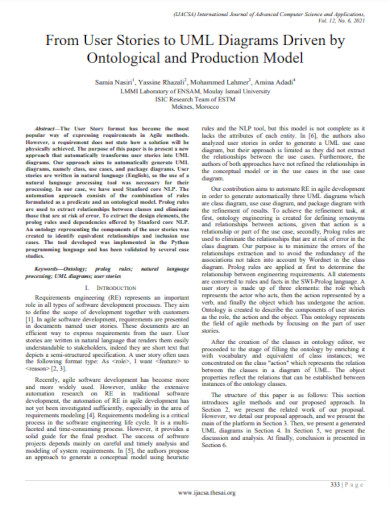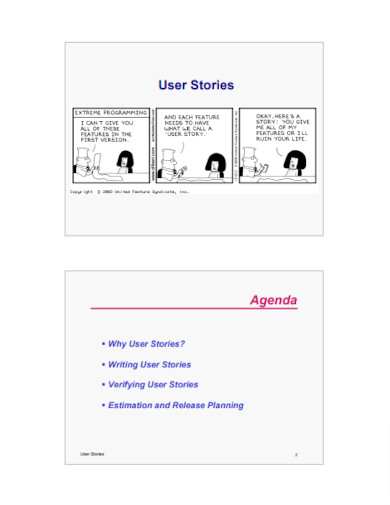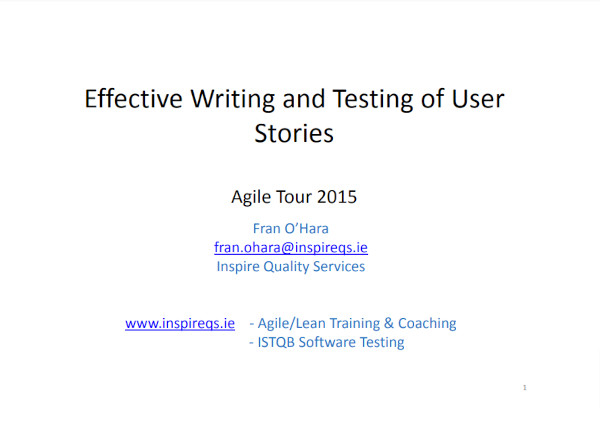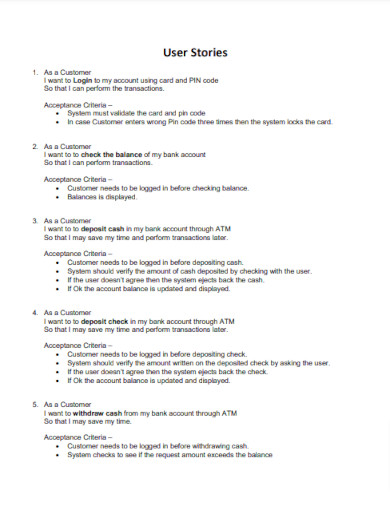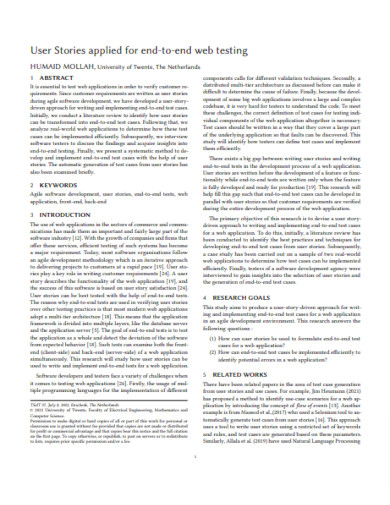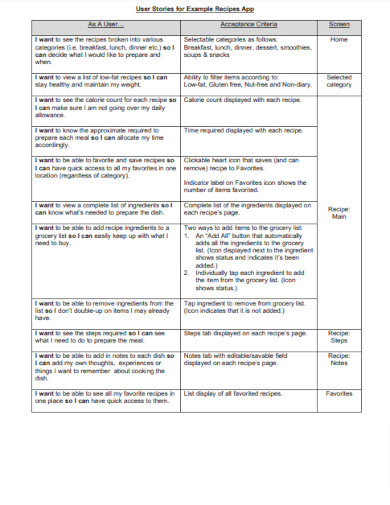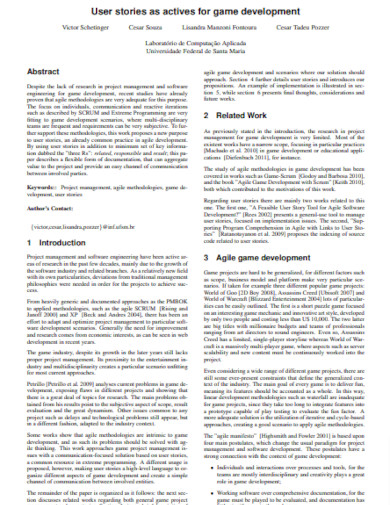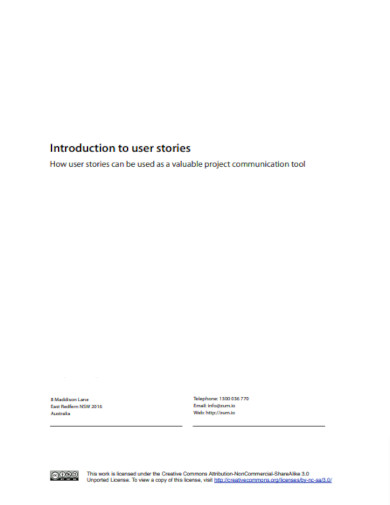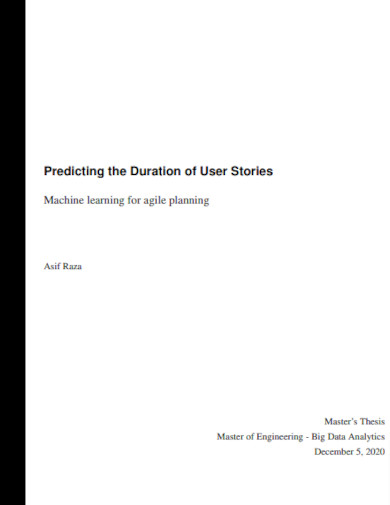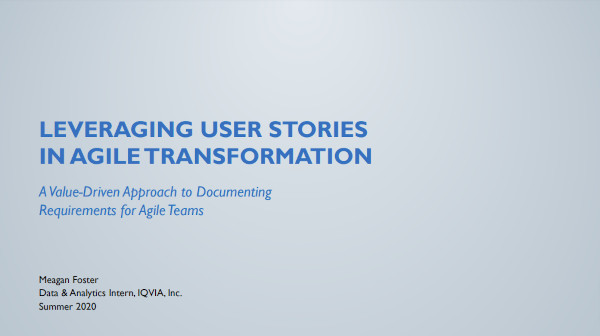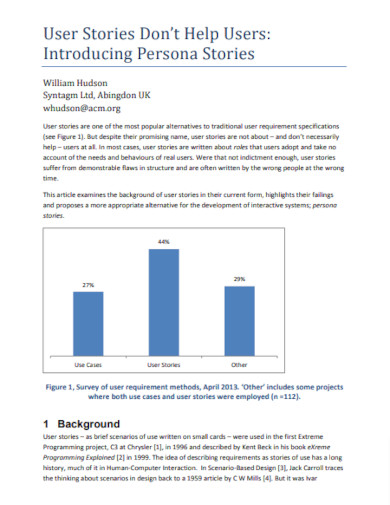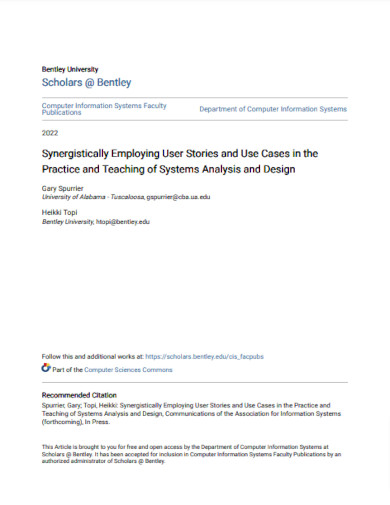34+ User Stories Examples to Download
When a business wants to create and push a product or service, the said business will need to create a working and unique product or service that will satisfy the needs of its target market or audience. The same is true for software development; the product or service business will need to accommodate and determine the end users of their software. One of the best ways to do all of this is through a user story. You may also see Narrative writing.
What is a User Story?
A user story is a short and succinct scenario that will detail what the end user wants and will obtain from the usage of the software. The user story will help the project manager learn about the different wants and needs of the customer base and will help provide the developers with various feedback, contexts, themes, and application of their software.
What is a User Story Examples?
A user story is a tool used in Agile software development to capture a description of a software feature from an end-user perspective. It helps to create a simplified description of a requirement and consists of three primary components: the type of user, what they want, and why they want it.
Here’s a detailed explanation using an example:
Basic Structure of a User Story
- Who: Identifies the user or the type of user who will benefit from the feature.
- What: Describes what the user needs to do or achieve.
- Why: Explains the reason behind the user’s need.
Example of a User Story
Let’s consider a user story for an online bookshop:
- As a (Who) book enthusiast,
- I want to (What) search for books by genre, author, or title,
- so that (Why) I can easily find the specific books I’m interested in.
This user story of fiction ideas focuses on a specific type of user, namely a book enthusiast. It clearly states what they want to achieve: the ability to search for books based on certain criteria. Finally, it provides the rationale behind this need: to facilitate easy and specific searches.
Key Characteristics of a Good User Story:
- Concise: User stories should be brief and to the point.
- User-Centric: They must focus on the user’s needs and experiences.
- Goal-Oriented: The story should emphasize what the user wants to achieve.
- Testable: It should be possible to devise tests to verify the implemented feature meets the user story.
Benefits of Using User Stories:
- Enhances Understanding: They help the development team understand what the user truly needs.
- Facilitates Communication: User stories foster better communication and collaboration among team members.
- Prioritization: They allow for the prioritization of features based on user needs.
- Flexibility: User stories can be easily updated and adapted as more is learned about the user’s requirements.
User stories are an integral part of Agile development, aiding in creating a more user-centered product. They help ensure that the development process is aligned with the actual needs and wants of the end-users, ultimately leading to more successful and usable software solutions.
35+ User Stories Examples
1. Writing Good User Stories Example
2. Writing User Stories Example
3. Better User Stories Example
4. User Story Examples Example
5. User Stories Examples PDF
What is the purpose of a User Story?
User stories are a fundamental component in Agile software development methodologies. They serve several critical purposes, all aimed at ensuring the development process is aligned with user needs and facilitates a more efficient and effective production cycle. Here’s a detailed explanation of the purpose of a user story:
Facilitates User-Centric Development:
- User Focus: User stories keep the focus on the user’s needs and experiences. They ensure that every feature developed serves a real purpose for the end user.
- Empathy Building: By framing requirements from the user’s perspective, they help the development team empathize with users, leading to more user-friendly solutions.
Improves Communication and Collaboration:
- Clarity in Requirements: User stories provide a clear, concise description of what is needed, which is easy for both technical and non-technical team members to understand.
- Collaborative Tool: They facilitate discussion among cross-functional teams (developers, designers, product managers) and stakeholders, leading to a shared understanding of what needs to be built.
Simplifies Complex Requirements:
- Breaking Down Features: User stories help in breaking down complex software features into manageable chunks, making it easier to plan, develop, and test.
- Prioritization: They allow for easier prioritization of features based on the value they provide to users.
Enables Flexibility and Adaptability:
- Iterative Refinement: User stories can be easily updated or modified as more information is gathered or requirements change, supporting the Agile principle of responding to change.
- Continuous Feedback Loop: They facilitate a continuous feedback loop, allowing for adjustments based on user feedback and testing results.
Assists in Planning and Estimation:
- Guides Sprint Planning: User stories are key in Agile sprint planning, helping teams decide what they can commit to delivering in each iteration.
- Estimation of Effort: They provide a basis for estimating the effort and time required for each feature, aiding in resource allocation and timeline planning.
Enhances Testing and Quality Assurance:
- Basis for Test Scenarios: User stories provide clear criteria for what needs to be tested, helping to create relevant and comprehensive test cases.
- Quality Improvement: Focusing on user needs ensures that the final product is not just technically sound but also delivers a high-quality user experience.
User stories are more than just a way to document requirements; they are a tool that embeds the user’s perspective into the software development lifecycle. This leads to the creation of products that are not only functional but also truly meet the needs and expectations of the end-users. You may also see Agile Project Plan.
6. Creating Effective User Stories
7. User Stories and Agile Planning
8. User Stories In Detail Example
9. User Story Examples and Counter examples
10. User Stories and Story Splitting
11. User Stories Applied Example
12. User Stories Workshop Example
13. Agile User Story Mapping Example
14. Ethical User Stories Industrial Study
15. Introduction to User Stories Example
16. User Story Essentials Example
17. Prioritization of User-Stories in Agile Environment
18. Refining User Stories Example
19. Cosmic User Story Standard Example
20. User Stories to UML Diagrams Driven
21. Simple User Stories Example
22. Effective Writing and Testing of User Stories
23. Editable User Stories with Acceptance Criteria
24. User Stories Applied for End-to-end Web Testing
25. Writing Effective User Stories Example
26. Story about User Stories and Test-Driven Development
27. Agile Requirements with User Stories
28. Printable User Stories Example
29. User Stories as Actives for Game Development
30. Introduction to User Stories Example
31. Predicting the Duration of User Stories
32. Leveraging User Stories in Agile Transformation
33. Standard User Stories Example
34. Synergistically Employing User Stories
35. Requirements and User Stories
How to Write a User Story?
The tone of the user story is basic, straight to the point, unlike a book or an essay. Not only that, but a user story follows a specific formula, book outline, format, or outline format the project manager or writer will need to follow. If you want to use story examples, samples, and references, you may utilize any of the links above.
Writing a user story is a key task in Agile software development, focusing on the user’s perspective to define software features. Here’s a step-by-step guide to crafting effective user stories:
Step 1: Identify the User
- Define the User Role: Start by identifying who the user is. This could be an end-user, a customer, or an internal user within the organization.
- Understand User Needs: Gain a deep understanding of the user’s needs, problems, and goals. This might involve user research, interviews, or surveys.
Step 2: Write the User Story
- Follow the Standard Format: A typical user story format is: “As a [type of user], I want [an action] so that [a benefit/value].”
- Be Specific: Clearly define the action or feature the user needs. Avoid technical jargon and keep it understandable for all stakeholders.
Step 3: Justify the Need
- Explain the Benefit: Include the reason why the user needs this feature. This helps to prioritize the story based on its value to the user.
- Align With Goals: Ensure that the user story aligns with the broader goals of the project or the business.
Step 4: Keep It Concise and Simple
- Brevity: User stories should be concise. Long descriptions can be broken down into smaller user stories.
- Clarity: The story should be clear enough that any team member can understand what is being requested and why.
Step 5: Make It Testable
- Define Acceptance Criteria: Specify what criteria must be met for the story to be considered complete. This guides developers and testers.
- Focus on Outcomes: The criteria should focus on the outcome and user experience rather than technical aspects.
Step 6: Review and Refine
- Collaborative Review: Share the story with team members for feedback. Different perspectives can help refine the story.
- User Feedback: If possible, get feedback from actual users to ensure the story accurately reflects their needs.
Step 7: Prioritize the Story
- Assess Value and Complexity: Evaluate the user story in terms of the value it brings to the user and the complexity or effort required to implement it.
- Prioritize Accordingly: Rank the story in the backlog according to its priority, balancing user needs and project constraints.
Step 8: Iterative Improvement
- Be Open to Changes: User stories are not set in stone. Be open to modifying them as more information becomes available or as user needs evolve.
- Learn from Implementation: Use the experience of implementing user stories to improve how future stories are written.
What is the difference between a Story and a User Story?
The concepts of a “Story” and a “User Story” are distinct, particularly in the contexts of general narrative and Agile software development. Below is a comparative table outlining their differences:
| Aspect | Story | User Story |
|---|---|---|
| Definition | A story is a narrative or account of events or experiences, real or imaginary. It has a beginning, middle, and end, and is designed to entertain, inform, or convey a message. | A user story is a short, simple description of a software feature from an end-user perspective. It articulates how a piece of work will deliver a particular value back to the customer. |
| Purpose | The purpose of a story is to entertain, teach, convey morals, or share experiences. | The purpose of a user story is to articulate how a specific software feature will provide value to the customer. |
| Components | Stories include characters, a setting, a plot, a conflict, and a resolution. | User stories include a written description of the feature, its acceptance criteria, and often the reason for its need. |
| Format | Can be written, spoken, or visual; often elaborate and detailed. | Typically follows a concise format: “As a [type of user], I want [an action] so that [a benefit/value].” |
| Usage | Used in literature, movies, theater, and everyday communication. | Used in Agile and Scrum software development methodologies. |
| Development Process | Developed through creative writing processes. | Developed through collaboration among development team members and stakeholders, often based on user personas and market research. |
| Flexibility | Stories can vary in length, style, and structure. | User stories are meant to be short and flexible, often refined and reprioritized as part of the product backlog. |
| Interactivity | Typically, stories are not interactive; they are created by the author and received by the audience. | User stories are part of an interactive process, involving feedback loops with end-users and continuous iteration. |
| End Goal | The end goal is to convey a message, entertain, or invoke a certain feeling or thought. | The end goal is to deliver a specific, valuable software feature that meets user needs. |
While a “Story” generally refers to a narrative with a structured format and is aimed at entertainment or message delivery, a “User Story” in software development is a tool for understanding user needs and ensuring that the product development aligns with these requirements.
FAQs
What is the point of a User Story?
The entire point of the user story is to provide the project team with an overview of all the possible ways the end user can use the software. Not only that, but the user story will also illustrate the different types of users to which the software can cater.
How do you identify a User Story?
Identify a user story by understanding user needs and goals, then succinctly describe a feature or requirement from the user’s perspective, emphasizing its value and purpose.
What are the important elements of a user story?
The most important elements of the user story are the card, conversation, confirmation, and context of the user story. Good user stories will have all of these important elements.
How should I write the user story?
The user story should only be a short succinct statement that begins with the “I am..” statement followed by the user’s profession and what they want out of the software. Then the second part of the user story should be a bulleted list with the acceptance criteria of the whole user story.
What is a User Story in Agile?
A user story in Agile is a brief, simple description of a software feature written from the end-user’s perspective, focusing on their needs and values.
What is a User Story in simple terms?
A user story is a short, simple description in Agile methodology that outlines a software feature from the perspective of the end-user, focusing on their needs and benefits.
Why are User Stories Important?
User stories are crucial in Agile for ensuring development focuses on user needs, improving communication, and aiding in feature prioritization and planning.
How to Write an Effective User Story?
To write an effective user story, clearly define the user, their need, and the benefit in a concise format, ensuring it’s understandable and actionable.
What is the Format of a User Story?
The format of a user story typically follows: “As a [user], I want [need/action], so that [benefit/value].” This keeps the focus on the user’s perspective.
How Do User Stories Drive Agile Development?
User stories drive Agile development by providing a clear, user-centered goal for each feature, enhancing team understanding, and guiding prioritization and testing.
Conclusion:
The user story is an important tool in project management which allows the project members to understand the usage potential of their software. Not only that, but good user stories will help produce successful products and services that will cover all the needs and wants of their users.



